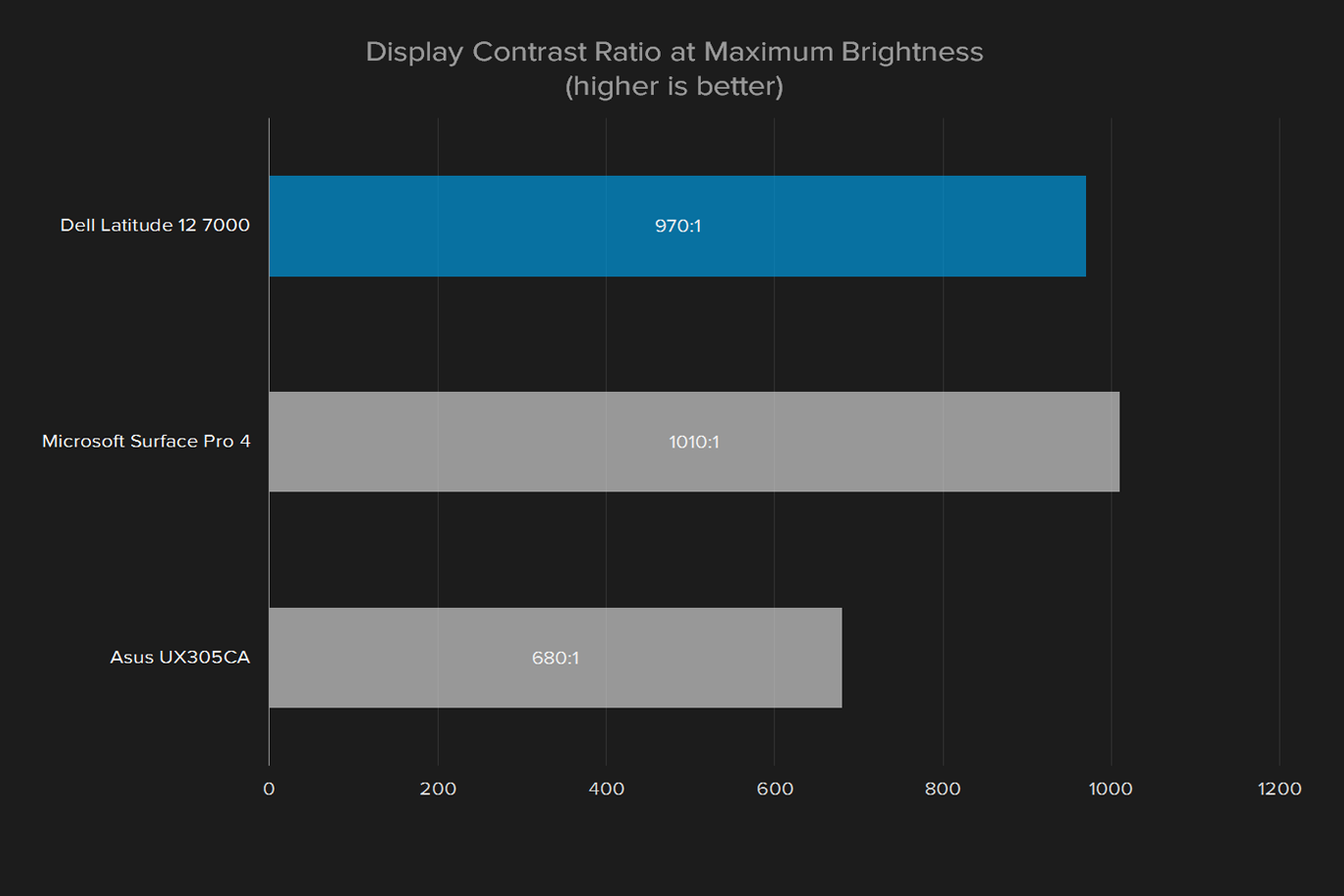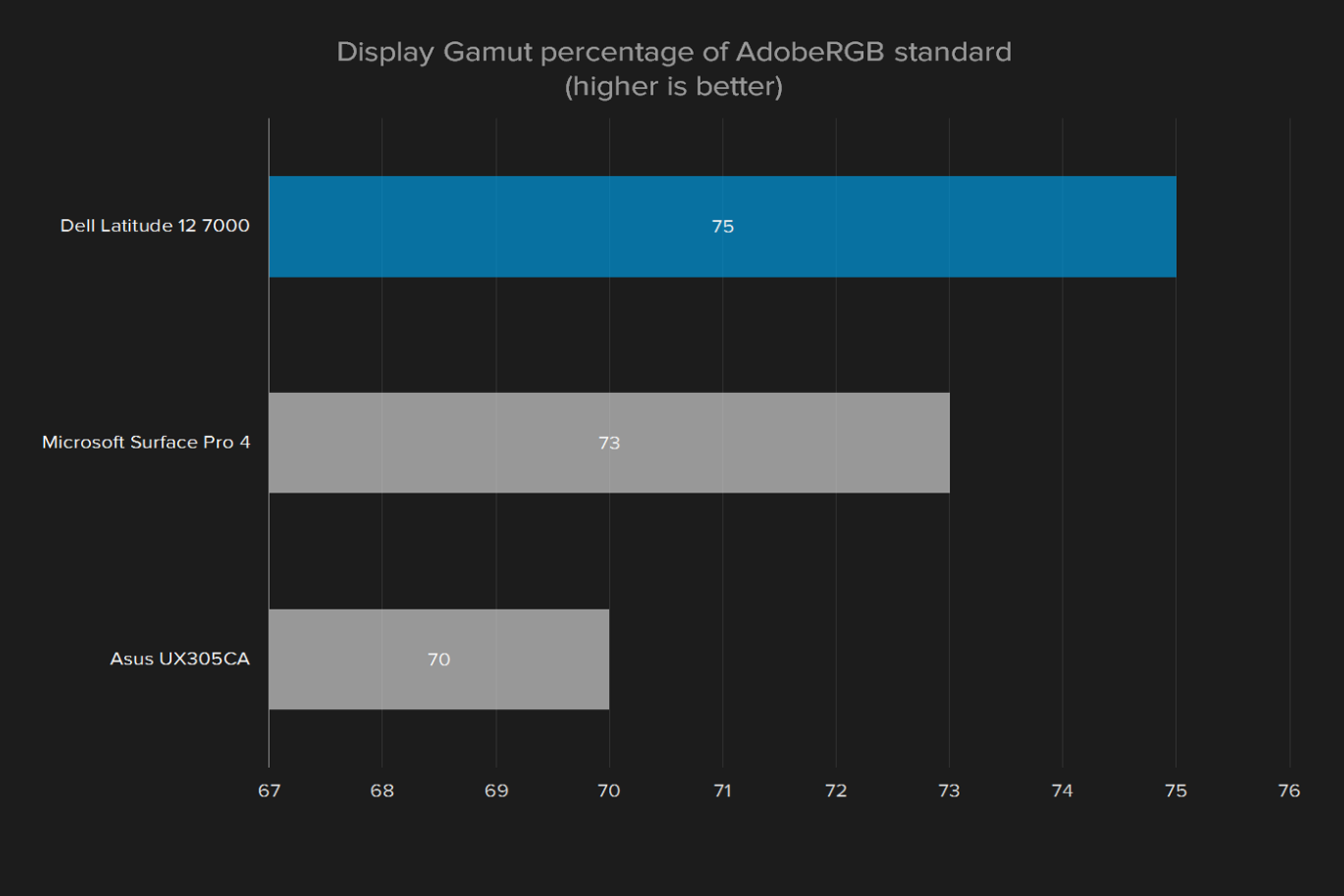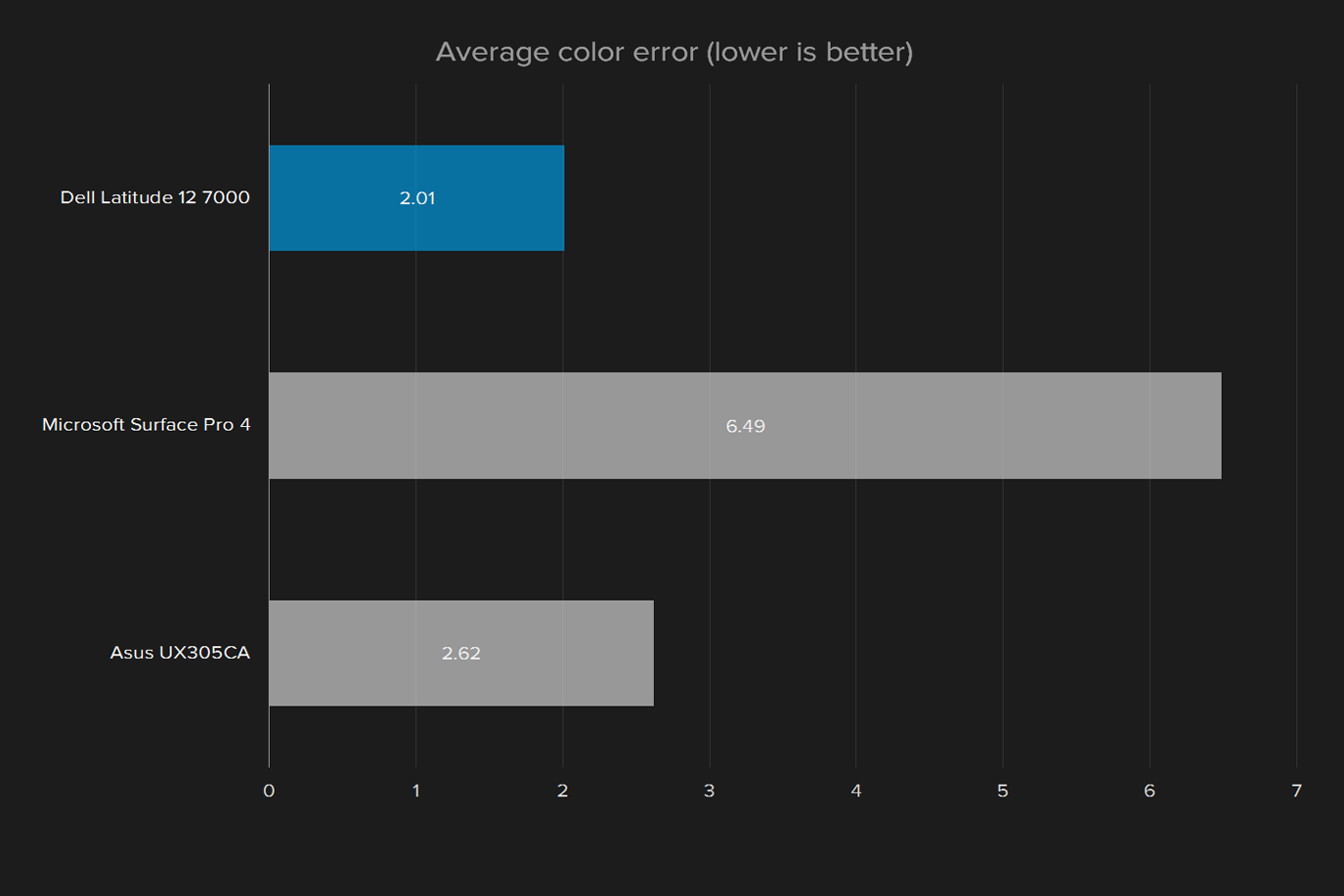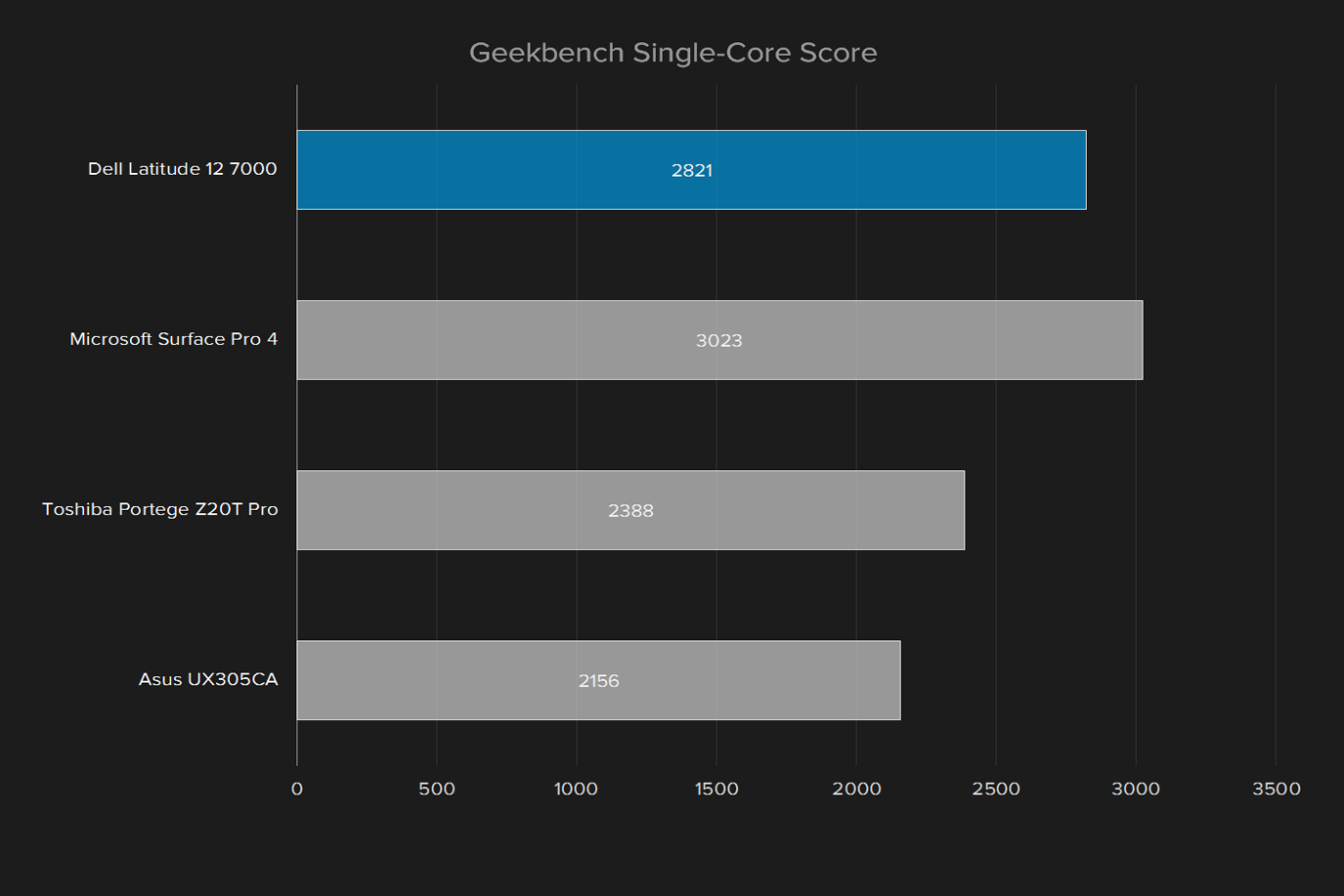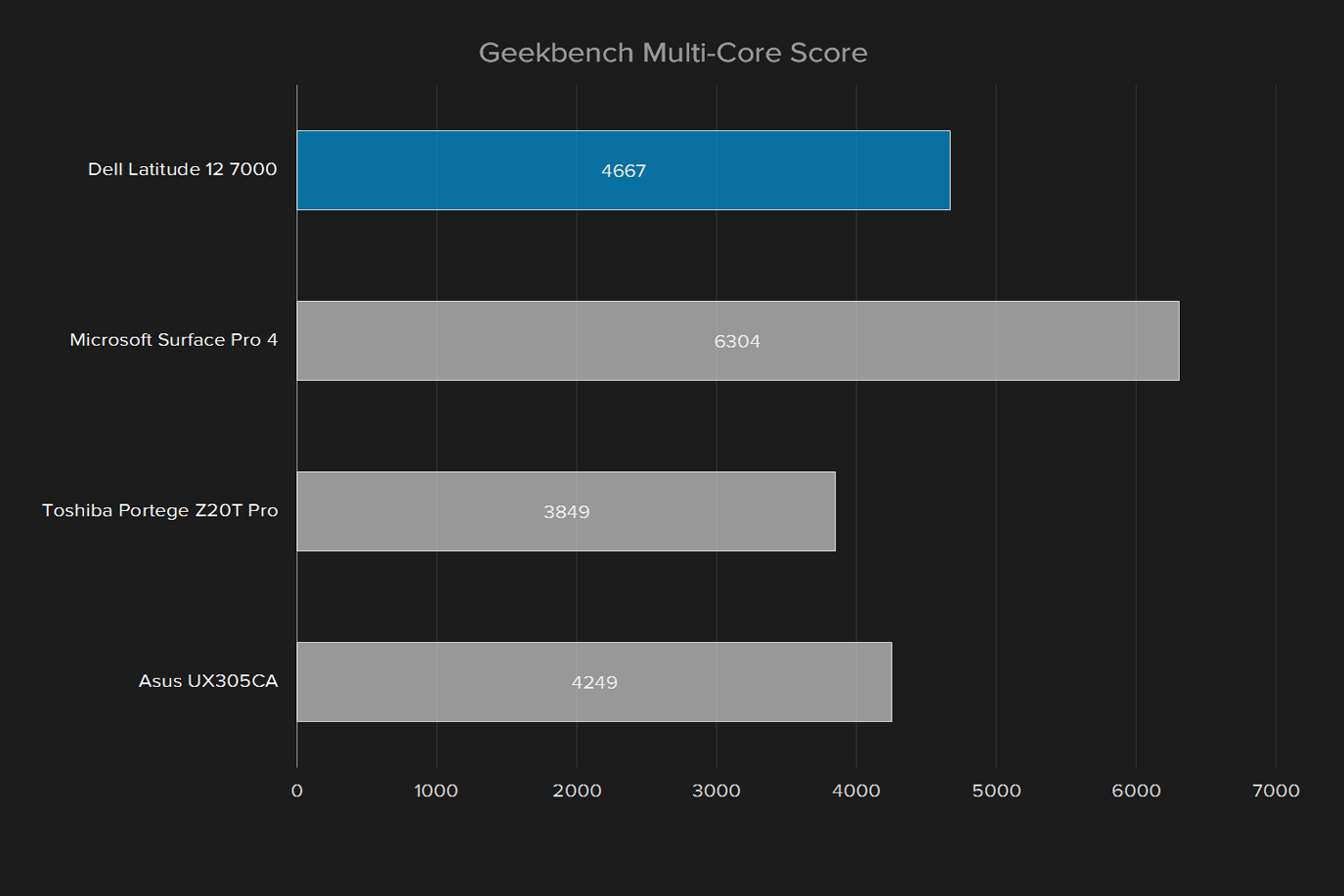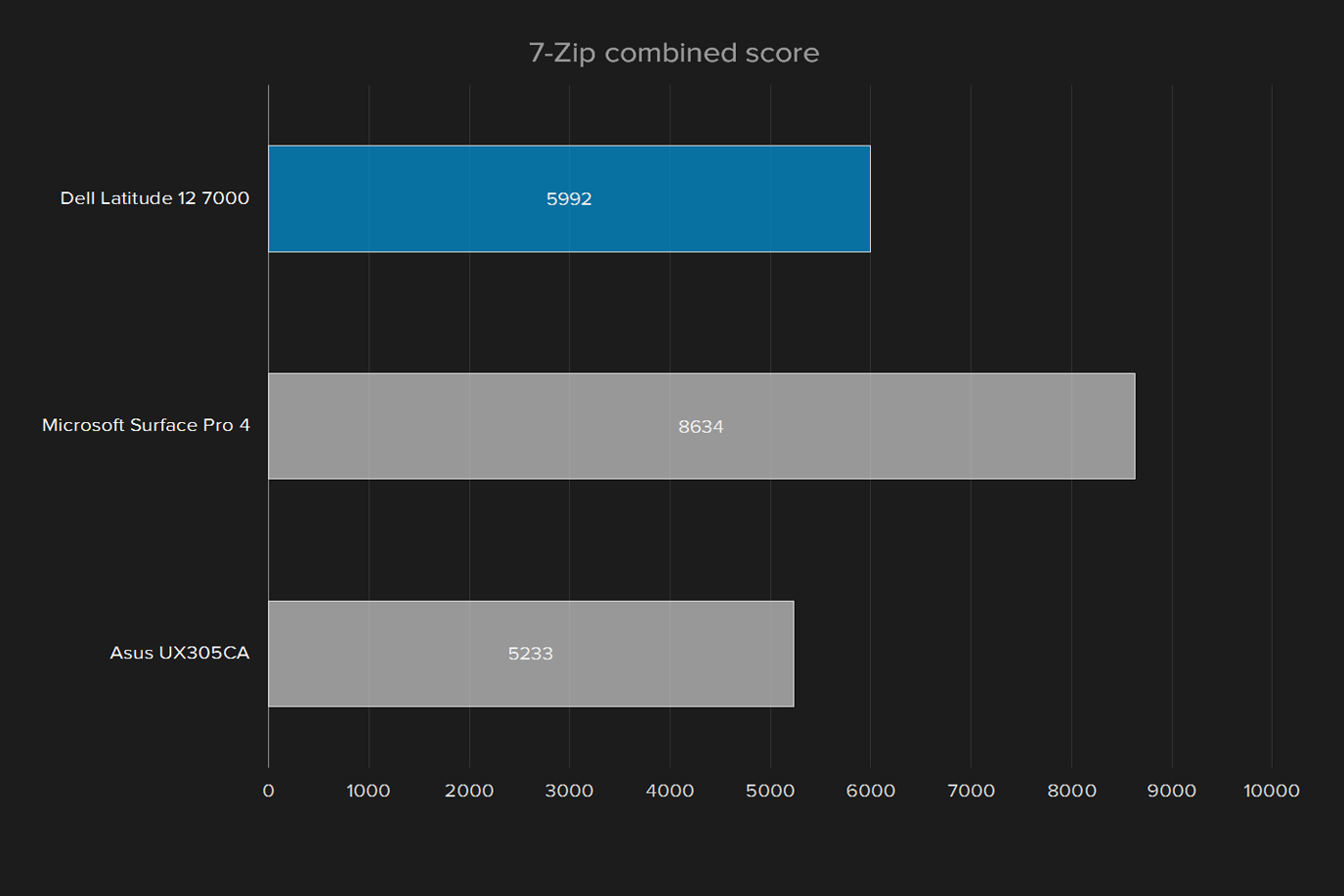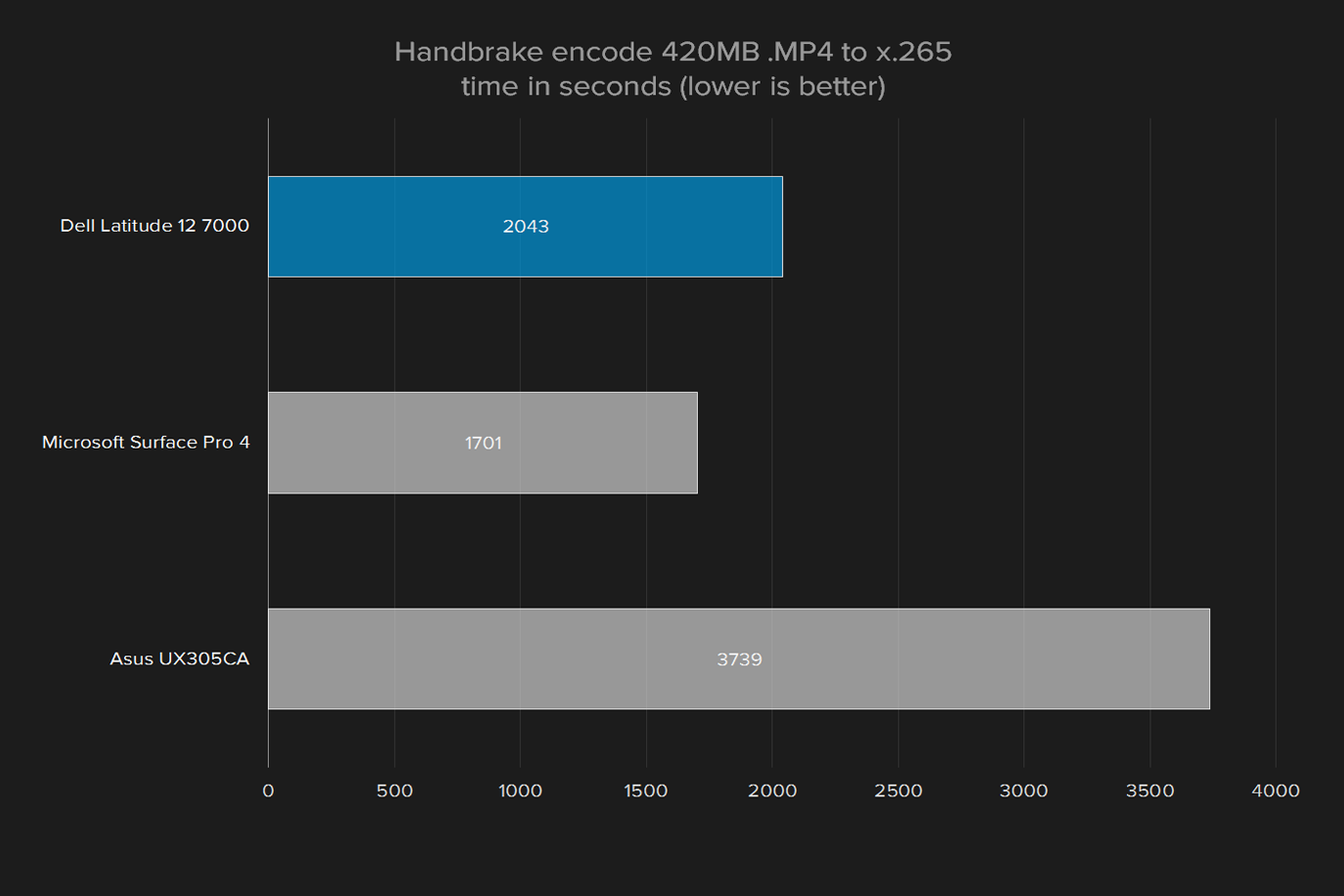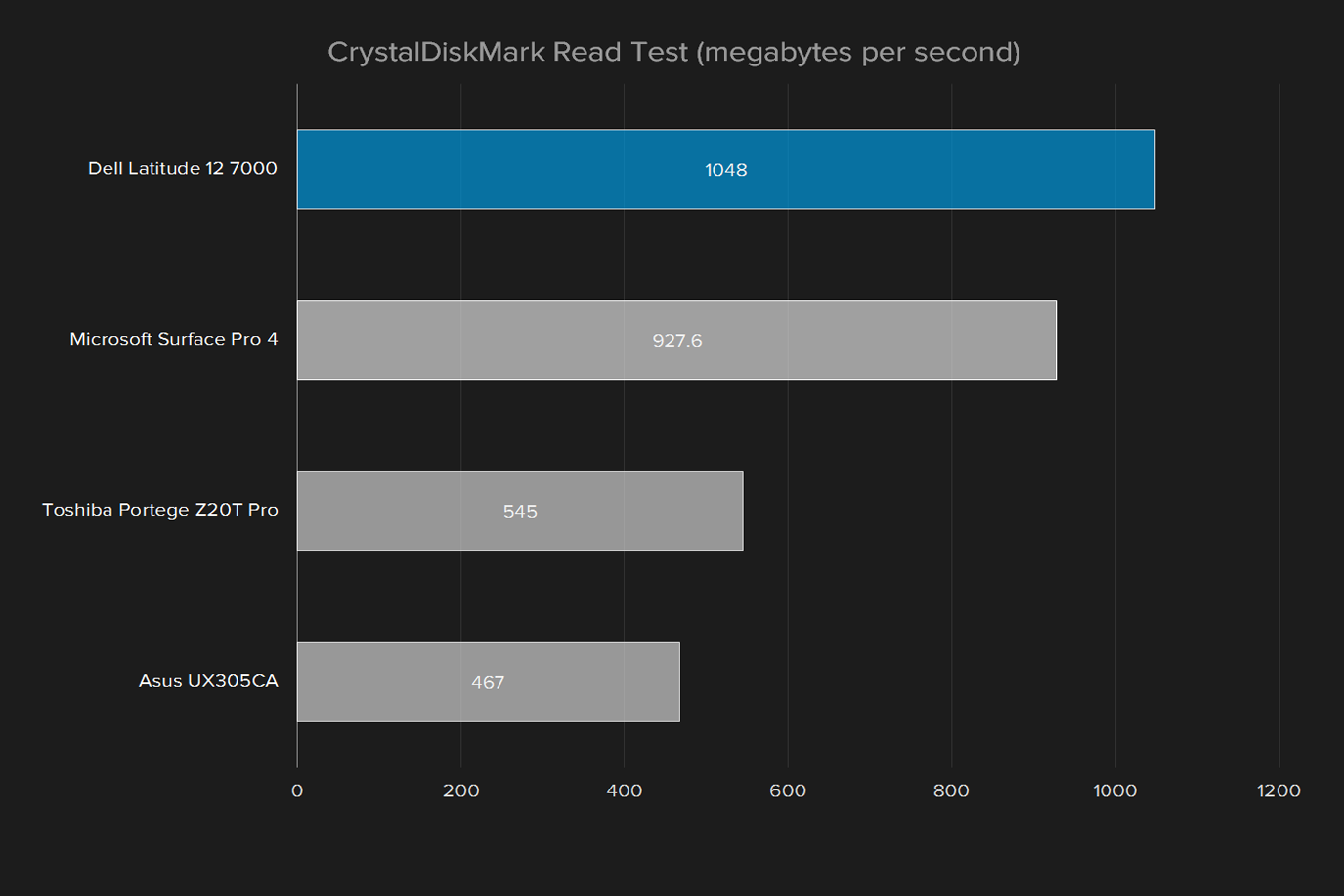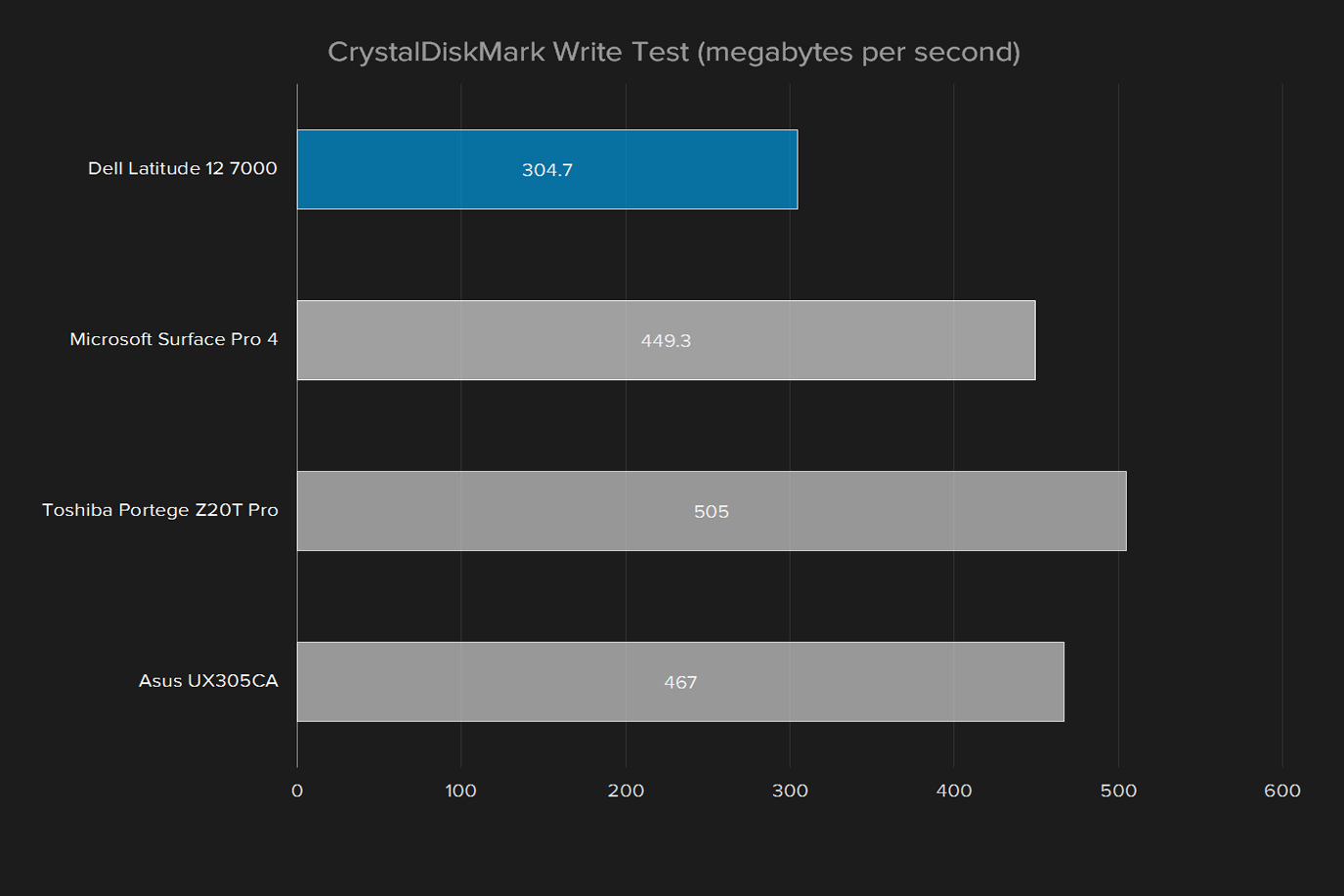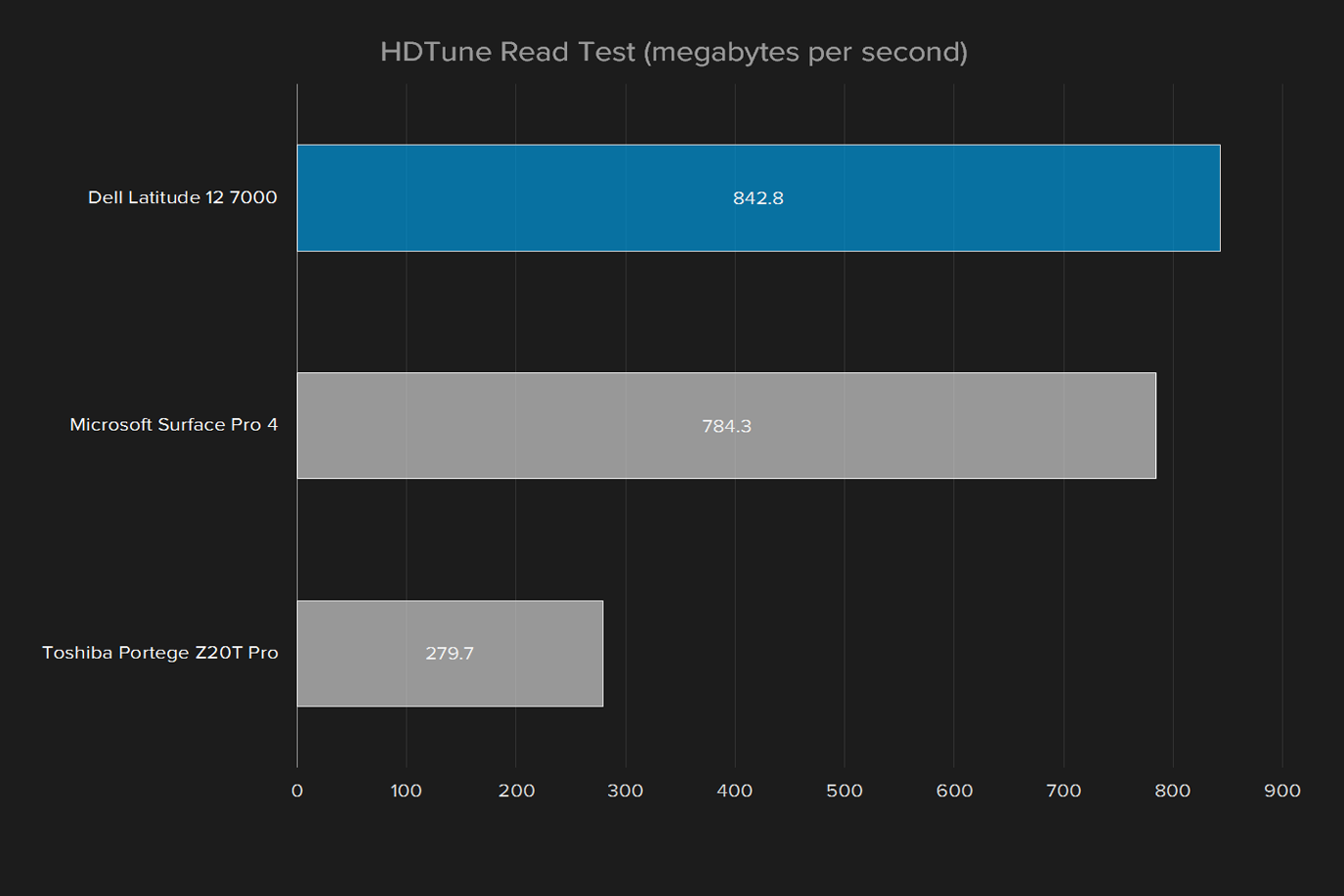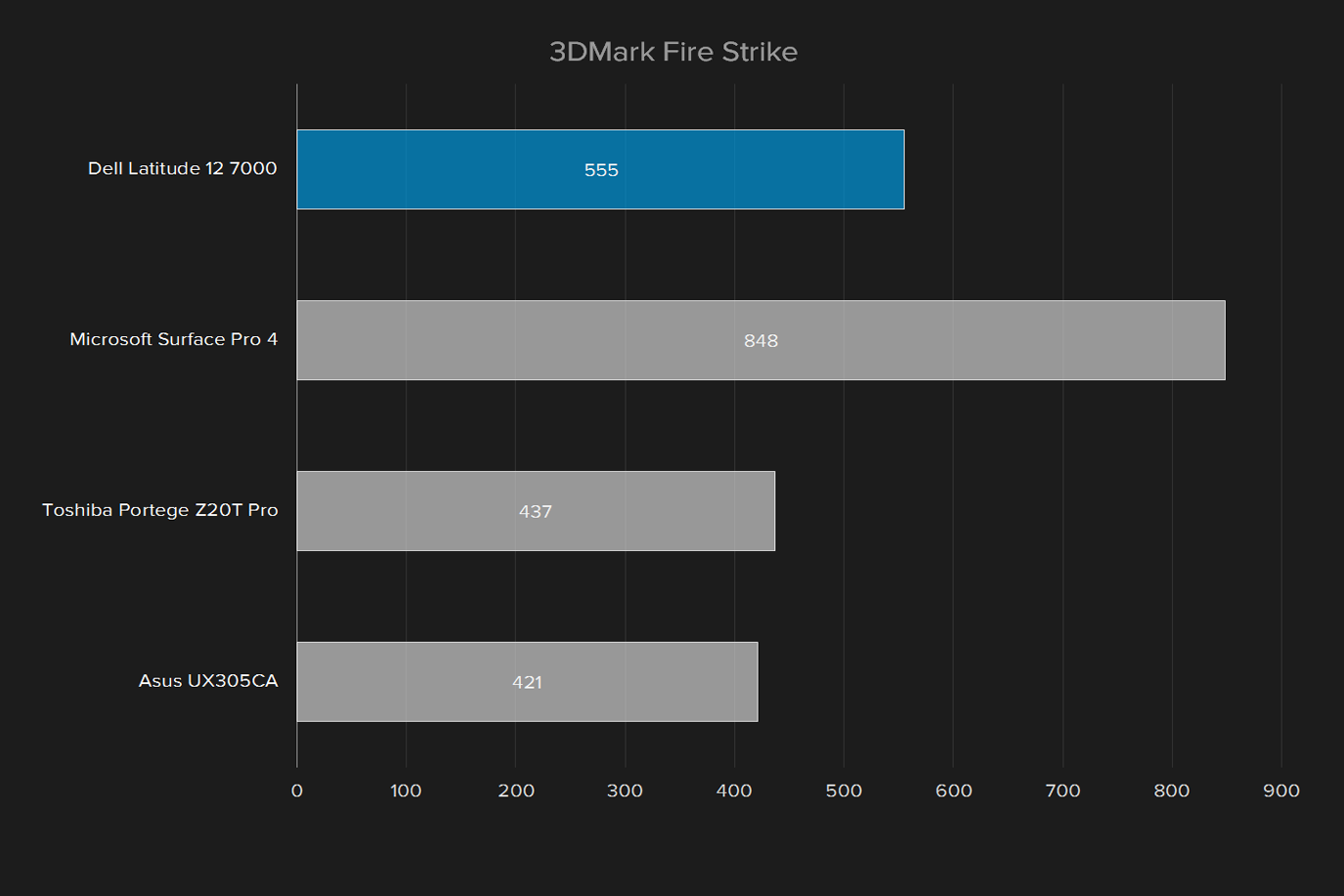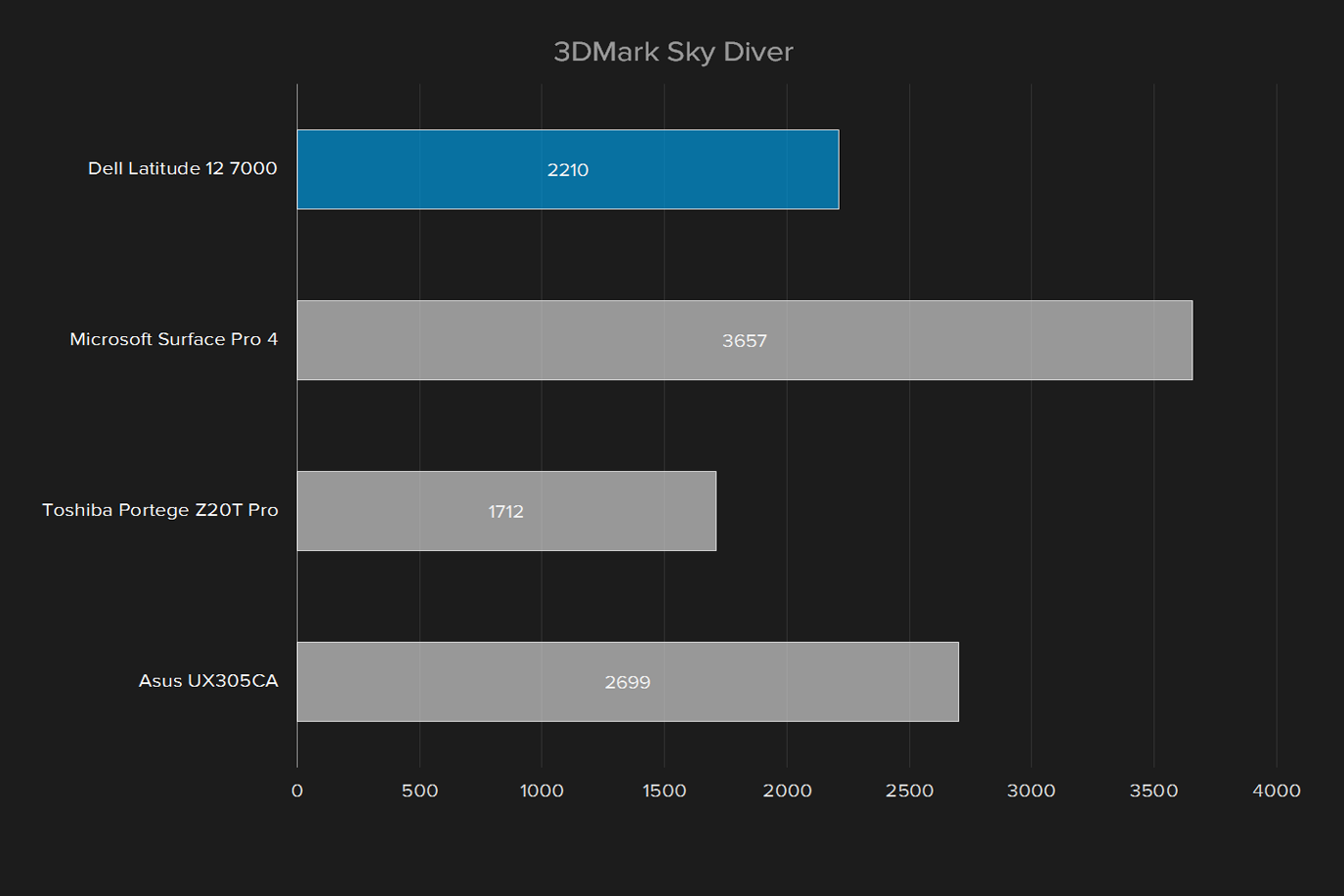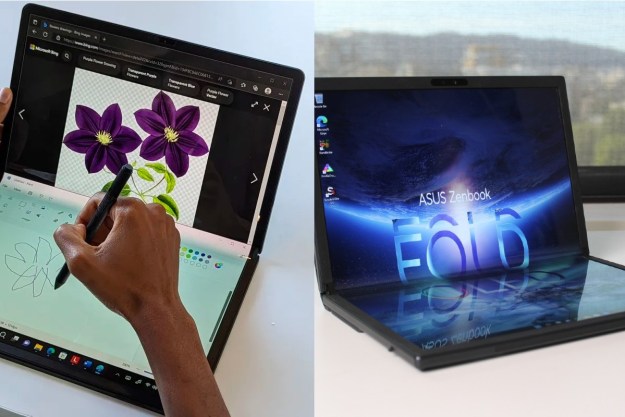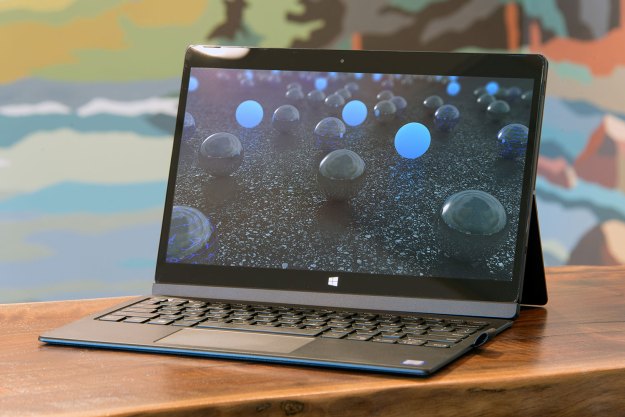
“The Latitude 12 navigates a mobile business world, and looks the part.”
- Nimble processor
- Speedy hard drive
- Classy, unique design
- Excellent bundled keyboard
- Limited connectivity, and adapters are pricey
- Mixed display quality
- IGP falls behind in game benchmarks
We don’t often spend time with Dell’s Latitude line. Unlike the XPS laptops, which promise mid-to-high end performance for the average user, Latitude machines are specifically built for business use, and tend to be a little less fun, both in terms of design and performance. But from where we’re sitting, this new Latitude 12 7000 looks like it might be down for a good time.
That’s probably because this Windows tablet packs in a Core m7, 8GB of RAM, and a 256GB PCIe SSD. It’s all tucked away behind a 12.5-inch 1080p touch display, with two different keyboard options. All that fun, and the tablet itself weighs just over a pound and a half.
Is the Latitude 12 finally loosening its tie, or is it still kind of a bummer?
Dress for the job you want
Dell’s attention to aesthetics has finally carried over from the consumer side to the business systems, and it really shows on the Latitude 12. The outside of the case is wrapped in a herringbone fabric that provides a classy, unique touch. The included keyboard wouldn’t look out of place next to a leather folio, a welcome change from the boring work laptops of old.
Inside, the fabric gives way to more traditional black plastic. It’s glossy on the screen, and matte on the keyboard, which isn’t an ideal combination. It’s a professional looking system, until you actually touch it. The screen shows grime and fingerprints clearly, while finger oils gather on the keyboard and palmrest.
The tablet is held to the slim keyboard’s dock by a magnet. It snaps in easily, although removing it requires finding somewhere to grab the Dell’s stand – usually by the kickstand on the back, which feels awkward. Speaking of the kickstand, it works well on a flat surface. It doesn’t slide or drag, and the screen doesn’t shake when you type.
Type-C is a paradigm shift
In a daring move, the Latitude 12 includes just two USB Type-C ports on its thin chassis, plus a 3.5mm headphone jack. The headphone jack is conveniently located in the bottom left corner.
The Type-C standard is the most versatile available, and Dell sells an adapter that splits the signal into USB 3.0, Ethernet, VGA, and HDMI. Unfortunately, that adapter costs $75, and most users will find it a necessity for connecting external displays and peripherals. If you just need a USB Type-A port, that adapter is $20.
Bundle up
Where other manufacturers charge extra for a keyboard peripheral, Dell includes the folio as an integral part of the Latitude. Our review model includes the basic slim keyboard, but don’t be fooled by the name. This bundled accessory is actually responsible for the attractive fabric exterior, and works excellently as an input device, as well.
The keys clack satisfyingly despite the folio’s thin construction. The layout is a little on the cramped side, but that’s to be expected from a detachable keyboard of this size. The backspace and function keys suffer the most, but only the former is frustrating.
The Latitude wouldn’t look out of place next to a leather folio.
Space isn’t an issue for the touchpad, which fills all the space available to it, to compensate for the Latitude 12’s small overall footprint. It works well, reading gestures easily, and the integrated buttons have a line drawn on to separate left and right click.
The issue, then, isn’t the keys or the touchpad itself, but how well Windows 10 can handle them. The OS still has issues when the keyboard is removed, reattached, or flipped over. It often takes more than a few seconds to adjust to form factor changes, and sometimes the keyboard and trackpad stay on even though they’re flipped around the back.
At least the keyboard is backlit, with off, low, and high settings. Even the low setting is acceptable for hunting keys, but the leak around the edge of the keys makes up the majority of the light generated. Regardless of how well it works, it’s not a feature commonly seen on detachable keyboards, so we’ll take what we can get.
Strong contrast, but mediocre color
The display is the face of any good tablet, and the Latitude has a decent head on its shoulders. The 12.5-inch screen is touch and stylus-enabled, and boasts 1080p resolution, which translates to a respectable 176 pixels per inch.
The benchmarks back up our initial impressions. The Latitude’s display reaches a maximum brightness of 373 lux, a strong rating for any display, with satisfying black levels to match. Contrast is a high point, reaching 970:1 at full brightness, just short of the Microsoft Surface Pro 4.
If there’s any hitch in the Core M’s giddy-up, you won’t notice it.
Strangely, gamma was way off, reading 2.5 instead of 2.2, which means mid tones will be lost to the darkness. This effect is particularly noticeable in movies. Color gamut is average, if not on the high side, at 75 percent AdobeRGB, and color accuracy is also above average at just 2.01, where a lower score is better.
Audio is powerful and clear, thanks to a pair of speakers near the top of the screen facing forward. Bass is nowhere to be heard, but at least the speakers don’t crackle and hiss at high volume, like a lot of smaller systems we review.
Looks like an M, runs like a Core
Our review unit was powered by a 6th generation Intel Core m7-6Y75. The dual-core chip sits near the top of its family, with a 1.2GHz base clock, 3.1GHz boost clock, and Hyper-Threading thrown in for good measure. While it runs smoothly in day-to-day tasks, it’s worth putting the squeeze on it to see how it holds up under load.
The Latitude 12 is able to hold its own against every other Core M processor out there in the synthetic tests. It has the highest clock, and the inclusion of Hyper-Threading bumps the performance even higher in multi-core tests. It falls behind the Core i5 in the Surface Pro 4, but not by as much as we would’ve thought going in.
Even on the Handbrake test, which involves converting a 4K trailer with the H.265 codec, the Latitude keeps up. If there’s any hitch in the Core M’s giddy-up, you won’t notice it except during the most CPU-intensive tasks, and its performance is closer to the i5 in the Surface Pro than to the Core m3 in the Asus UX305.
Make the move to M.2
Although the default configurations of the Latitude include M.2-based SATA drives, our review unit is packing a little more heat in the form of a 256GB PCIe SSD – a Samsung PM951 to be exact. That’s a move that costs an extra $84, but PCIe drives usually pay off in the form of read speeds that are double or triple their SATA counterparts.
True to form, the PCIe SSD obliterates not just SATA drives, but also the read test speeds of the Surface Pro 4. We’re familiar enough with the PM951 to know it falls behind in write speeds, where it’s short of even the SATA drives. Its handicap doesn’t prevent it from running smoothly in everyday use, however, which makes the upgrade from SATA more tempting.
Too busy for games
The integrated graphics in the Latitude, Intel’s HD 515, is barebones. That, combined with the processor’s underwhelming performance, is bound to keep this business-minded machine far from the gaming world. Still, it’s worth seeing if it can produce playable framerates in our more basic test suite games.
That Latitude’s no-fun-allowed attitude rears its ugly head here, as the IGP falls far behind the Surface Pro 4 it tailed so closely before. It sits a lot closer to the Core M chips in the Asus and Toshiba in terms of graphical prowess, but that’s to be expected in a business-minded system. Synthetic benchmarks are one thing, but how does it run in the real world?
While we don’t have much to compare it to, it’s worth noting the Latitude is able to achieve just over 40 frames per second at low detail in Counter-Strike: Global Offensive. That’s not an ideal, playable framerate, but it’s a good indication the system can tackle less demanding indie games. The Microsoft Surface Pro 4, along with most laptops, can offer more, but the Inspiron 12 7000 Series isn’t hopeless.
Business trips
The versatile form factor only makes the already-slim Dell even more portable. The tablet itself is just .32 inches thick, and at just 1.61 pounds, is easy to use without worrying about arm fatigue. The keyboard flips all the way around behind the tablet, but it’s more comfortable to just separate them and use the tablet on its own, especially considering the slim keyboard brings the total weight up to 3.1 pounds.
That same portability doesn’t carry over to the battery life. The Dell succumbed to exhaustion in just under four hours while running the PeaceKeeper browser benchmarks. The test itself is fairly demanding, but more importantly, the Dell’s battery isn’t particularly large, a function of the tablet’s tiny size.
That also puts the Dell well behind other tablets in its price range. Similar high-end options like the Surface Pro 4 and Toshiba Portege Z20t easily break six hours on a single charge.
Cool customer
The fanless Dell runs silently. That’s one of the benefits of the low power Core M chips, and it helps keep the Latitude 12 slimmer than ever. The downside is usually heat management, but there’s no real issue here, either. The back of the tablet can reach 101 degrees Fahrenheit under load, but that’s not hot enough to keep you from holding it comfortable during use.
The warranty comes to you
Dell backs up the Latitude 12 7000 with a one-year warranty. In a move that’s sure to please the busiest among us, Dell even offers in-home or on-site repairs, following a remote diagnostic checkup. One year is the standard for laptops at almost any price range, and Dell’s twist on it is a nice touch.
Take a break
Slim, light, and versatile, the Dell Latitude 12 is an excellent system for the on-the-go user who does a little bit of everything. A touch of browsing, lots of email, light image editing, and maybe a Hearthstone match in between – the Core M chips have come a long way, and it’s starting to show.
But the value for anyone not purchasing through a company is going to hurt. The Latitude starts at $1,050. The comparable Surface Pro 4 packs in a core i5, 128GB PCIe drive, and a beautiful, high-resolution display for $50 less. Dell includes the keyboard, a $150 addition in most cases, but that’s not quite enough to overcome the high cost of entry.
Cost aside, the Latitude 12 is versatile, powerful, and portable. My minor quibbles with the system, like the leaky keyboard backlight and the lack of gaming prowess, are features you wouldn’t expect anyway. This 2-in-1 isn’t the life of the party, and it doesn’t pack in flashy features like the Dell XPS 13’s super sleek InfinityEdge, but it gets the job done – and that’s what matters to its target user.
Editors' Recommendations
- 9 best laptops of 2024: tested and reviewed
- The best 2-in-1 gaming laptops for 2024
- Which is better: Dell Latitude or Inspiron?
- Apple Mac Mini M2 vs. M1: don’t make a buying mistake
- Microsoft Surface Pro 9 vs. Lenovo IdeaPad Duet 5i: which 2-in-1 is best?

